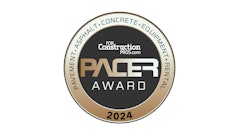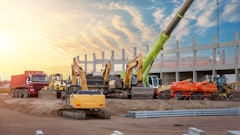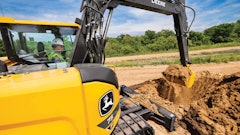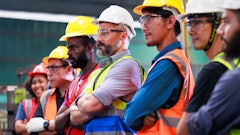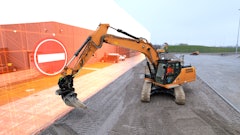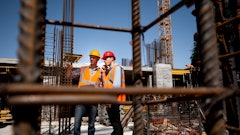
The construction industry faces unique challenges regarding employee safety. Working with heavy machinery, navigating complex structures, and handling hazardous materials all require a sharp mind, steady hand, and unwavering focus. In the high-stakes world of construction, where every action carries potential risks, ensuring a safe work environment is paramount. Unfortunately, substance abuse can compromise these essential skills, putting workers at significant risk.
The Dangers of Impairment
The National Council on Alcoholism and Drug Dependence (NCADD) reports a troubling statistic: breathalyzer tests detected alcohol in 16 percent of construction workers treated in emergency rooms for work-related injuries. This highlights the prevalence of substance abuse within the industry and its potential for disastrous consequences.
Even minor impairment can significantly compromise worker safety. Reaction times slow down, making it difficult to avoid hazards or operate machinery safely; judgment becomes clouded, leading to poor decisions and disregard for safety protocols. Impairment can also cause clumsiness, increasing the risk of slips, trips, and falls, especially in construction professions requiring precise movements. Some substances can even heighten aggression, potentially escalating conflicts and creating a hostile work environment.
These factors contribute to a higher risk of accidents, which can have devastating consequences for workers, their families, and the company. Direct costs associated with accidents include medical bills, lost productivity, and potential lawsuits. Indirect costs, such as damage to equipment and materials, can also be substantial. Construction businesses must prioritize implementing robust background and drug screening programs to mitigate these risks.
The Benefits of Drug Screening
Drug screening and background checks are not merely administrative procedures, but critical components of a comprehensive safety strategy. By thoroughly vetting prospective employees and conducting periodic screenings for existing staff, construction companies can identify and address potential risks before they escalate into hazardous situations. Stringent screening protocols also instill confidence among clients and stakeholders, showcasing a commitment to safety and quality in every aspect of operations.
Continuous drug screening, facilitated by innovative solutions, represents the pinnacle of workplace safety protocols. Unlike one-time screenings, which may only provide a snapshot of an employee's substance use at a particular moment, continuous screening offers ongoing monitoring and detection capabilities. This proactive approach enables employers to swiftly intervene in cases of substance abuse, thereby preventing accidents and ensuring the well-being of all workers on-site.
By implementing a comprehensive drug testing program, construction companies send a clear message that safety is a top priority. This can discourage workers from using drugs and encourage them to seek help if they are struggling with addiction. Additional benefits include:
- Improved Productivity: Substance abuse can significantly impact productivity. According to the NCADD, approximately 20 percent of workers and managers report that a coworker's on- or off-the-job drinking jeopardizes their own productivity and safety. Impaired workers are less efficient and more prone to mistakes. Drug screening helps ensure a workforce that is focused, reliable, and capable of performing at its best.
- Reduced Accidents and Injuries: Studies have shown a clear link between drug screening and a decrease in workplace accidents. A safer work environment translates to fewer injuries, leading to lower workers' compensation costs and improved employee morale.
- Enhanced Company Reputation: A strong safety record can give a construction company a competitive edge when bidding on projects. Clients are increasingly focused on safety and may prefer companies with proven safety procedures in place.
Types of Drug Testing
The construction industry utilizes various drug testing methods to ensure a safe work environment. Pre-employment testing screens potential employees for drugs before they are hired; random testing acts as a deterrent for current employees by selecting workers unannounced for drug checks throughout their employment; reasonable suspicion testing targets employees showing signs of drug or alcohol influence on the job site; and post-accident testing helps determine if impairment played a role in any work-related accidents.
Companies should partner with a reputable screening company that offers a variety of testing options, adheres to strict chain-of-custody procedures, and provides timely results. It's also best to develop a clear written policy outlining the company's stance on drug and alcohol use and the procedures for drug testing and background checks.
Traditional screening methods like paper checks or generic background checks simply don't cut it anymore. They're slow, error-prone, and leave you with limited information about your candidates. This can lead to costly mis-hires, high turnover, and even safety risks on your projects.
Here's how you can build a winning pre-employment screening strategy:
- Boost Efficiency and Speed: Modern screening platforms use automation to streamline the process. Imagine instantly verifying certifications, conducting reference checks, and flagging potential red flags electronically. This frees up your team's valuable time to focus on interviewing top candidates and making informed hiring decisions.
- Go Beyond the Basics: Modern screening goes deeper than just a criminal background check. Look for platforms that offer skills assessments and insights into a candidate's soft skills and cultural fit. This helps ensure you're hiring qualified individuals and a good fit for your company culture, leading to happier and more productive employees.
- Prioritize Safety and Compliance: Partner with a Consumer Reporting Agency (CRA) accredited in your region. This ensures your screening process meets all legal requirements and protects you and your candidates. A thorough screening minimizes the risk of bringing someone onto your site, which could pose a safety threat or damage your company's reputation.
- Reduce Costs and Improve ROI: Advanced screening platforms save you time and money by eliminating manual tasks and automating workflows. Additionally, by making better hiring decisions from the start, you reduce costly turnover and improve your bottom line.
- Build Trust and Attract Top Talent: A smooth and efficient screening process reflects positively on your company. Candidates appreciate a fair and transparent process, which helps you build trust and attract the best people for the job. Modern platforms allow customization based on the specific role, ensuring you get the correct information for each hire.
Building a Culture of Safety
Ultimately, the efficacy of drug screening and background checks lies in their technical implementation and ability to foster a culture of safety within the construction industry. Educating employees about the company's drug and alcohol policy, the benefits of a safe work environment, and the resources available to help them if they are struggling with substance abuse is also a critical component of a successful program.
By prioritizing employee health and well-being, construction companies can cultivate an environment where safety is not merely a set of guidelines but a shared value ingrained in every aspect of operations. This cultural shift transcends organizational boundaries, influencing subcontractors, suppliers, and stakeholders to prioritize safety.
Drug screening and background checks play a pivotal role in mitigating the risks posed by substance abuse, thereby safeguarding both employees and the integrity of construction projects. By embracing these practices as cornerstones of their safety strategy, construction companies can foster a culture of accountability, responsibility, and safety. In doing so, they protect their most valuable asset—their workforce—and uphold the highest standards of excellence in an industry defined by its commitment to precision and quality.



